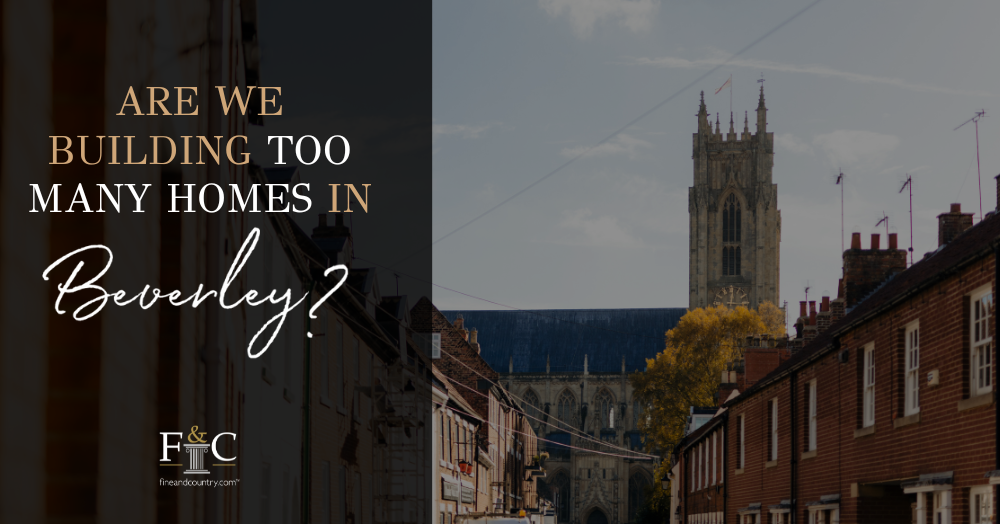The issue of new housebuilding in the UK stirs strong emotions. Many believe their local
areas are turning into construction zones, with too many homes being built, disrupting the
character of towns and villages.
But is this perception grounded in reality?
The Labour government, which came into power in the summer of 2024, has set a bold target: 300,000 homes built annually for the next five years, amounting to 1.5 million new homes by the end of their tenure. This figure sounds ambitious - and perhaps a touch optimistic - when you consider that, as a nation, we've averaged only 170,000 to 180,000
homes per year over the last two decades.
The Numbers: Starts, Completions, and Context
In the past 12 months, the number of new homes started and completed across the UK has fallen significantly short of the Labour government's target. For instance:
- Housing starts: 134,570
- Housing completions: 158,420
These figures reveal a startling truth: we are building far fewer homes than we need, even as the housing crisis deepens. To meet the government's goal, we must build 10.71 homes annually per 1,000 existing homes.
Surely, We Are Building Enough New Homes in Beverley?
Despite concerns about over development, the UK data tells a different story. The UK is not building anywhere near enough homes to meet the needs of its growing population. Even independent studies show we must deliver at least 300,000 homes annually to address decades of under supply and support demographic changes, such as longer life expectancy and smaller household sizes.
Many people say we don’t have the space to build these homes, but would it surprise you that only 1.2% of England and Wales is built on with residential homes? If we were to add Scotland to that number, that percentage would tumble even further.
Many people in Beverley feel the town has become a building site.
So, let’s look at the stats for locality:
There are 176,732 homes in the East Riding of Yorkshire, and 1,860 new homes were built last year.
So, the number of East Riding homes built per 1,000 existing homes over the past year is 10.52, above the benchmark required to start to alleviate housing shortages.
Who’s Building These Homes?
When breaking down the data, it’s clear that new builds are heavily skewed towards the private sector:
- Private sector: 67.2%
- Housing associations: 24.7%
- Our Local Authority: 8.1%
While private developers dominate the market, the contribution from housing associations has been eager. However, the local authority's lack of building homes is frankly quite disappointing. This is a critical point: without a greater push from the public sector, especially our local authority, the affordable housing shortfall will persist.
Why Aren’t We Building Enough Homes in the UK?
There are several reasons for the gap between aspirations and reality:
1. Planning bottlenecks: Many developments are held up by protracted planning processes and local opposition.
2. Land availability: A lack of suitable land - often tied up in greenbelts or agricultural use - limits where homes can be built.
3. Labour and material shortages: Post-pandemic and post-Brexit, the construction industry is struggling with a lack of skilled workers and rising material costs.
4. Resistance to change: Local opposition to new developments is a significant barrier. Concerns over infrastructure, congestion, and the loss of green spaces often dominate public discourse.
The Local Impact
For the people in Beverley, they do have a point with all the building, as the statistics show we doing more than our fair share and above the levels required to maintain a healthy housing market.
I understand these frustrations as someone deeply involved in the local Beverley property market. However, towns like ours have always been expected to take a greater share of the burden of building new homes because of our location. I encourage anyone curious about what these trends mean for their property journey - whether they're looking to sell, buy, or understand the market better - to reach out. There’s no obligation; I’m here to help guide and support you with the knowledge I’ve gained from years in the industry.
The Way Forward
To address the housing crisis in the country, we need a balanced approach:
- Empowering all local authorities and housing associations all over the UK to build more affordable homes.
- Streamlining the East Riding of Yorkshire planning system to reduce delays and create certainty for developers for even more development
- Engaging communities to find common ground between development and preserving local character.
- Supporting sustainable building practices to ensure new developments meet the needs of both current and future generations.
Building 300,000 homes a year is a steep climb, but it’s one we must tackle head-on if we are to meet the needs of future generations of Beverley people. The question is not whether we are building too many homes but whether we are building enough - and the
answer, quite clearly, is no.
I certainly know if we do have to build even more extra homes in Beverley, the infrastructure alongside these new homes needs to rise as well, like new schools and extra capacity at our hospitals.
